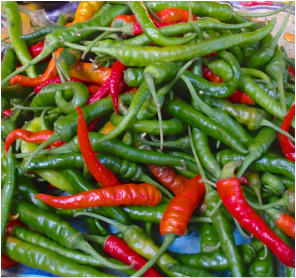
Bicol Express for home cooks is made of pork or chicken stewed in a sauce of coconut milk, chiles, and bagoong or shrimp paste. But Bicol Express can be made as a sauce separately from any protein. In the Bicol region, diners often order it as a side dish or sauce, like salsa to put on any dish of the meal. And in Bicol, the sauce comes in jars which you can buy at the grocery store. Bicol Express is an authentic recipe that should be tried by anyone who wants to cook Filipino food. Besides the fact that it's delicious, there are a number of reasons why:
Bicol Express’s Filipino-ness Is in its Regional Roots
The story about the dish's origins claim that Ms. Cely Kawlaw, a restaurant cook in Manila, had spent part of her youth in the Bicol region of Luzon and took her inspiration and the main ingredients for Bicol Express from that region's cuisine. She named the recipe after the train line from Manila to Legazpi City in Bicol. And though the three flavoring ingredients of Bicol Express are typical in many Bicol foods—coconut milk, spicy chiles, and bagoong—all are available and used in other dishes throughout the archipelago. In cooking a regional Filipino dish, though, cooks acknowledge a distinct characteristic of the Philippines: the nation is made from a diverse collection of many ethnic groups, languages, and cuisines. There isn't really one Filipino dish. The legend of Bicol Express's migration from its ancestral roots in Bicolano cuisine to Manila back to Bicol shows it’s ability to cross borders of cuisine within the country.
Bicol Express Is Mistake-Proof
Bicol Express is easy to make and even initial attempts that may turn out to be first-time flops will probably still be pretty delicious. I know from experience! Unlike other dishes, adobo for instance, there's not really a way to mess this up because all the ingredients are so singularly yummy.
A Filipino Dish that Expands the American Palate
Bicol Express is sufficiently original and challenging enough to the non-Filipino palate. This ultimately is the most important reason to make it. The inclusion of bagoong is the ingredient that really makes the dish distinctive and amazing.
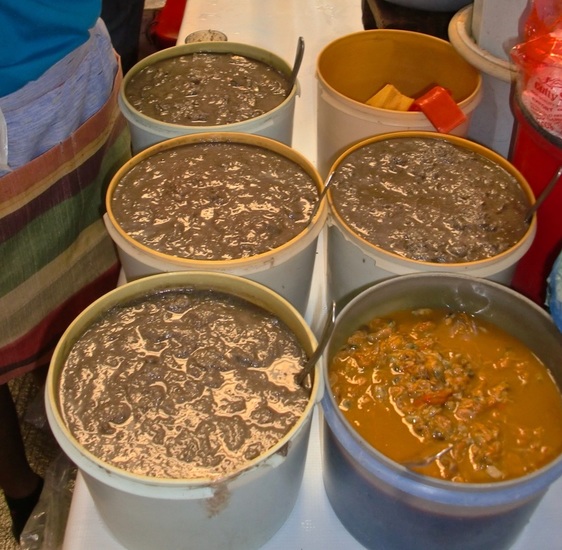
Bagoong sold in the market. The best for Bicol Express--the chunky partially fermented shrimp paste--is on right.
If you are scared of the idea (or smell!) of fermented shrimp paste, Bicol Express will probably change your mind. The Spanish colonists had an outsider’s prejudice against the stuff, but had they tried it in Bicol Express, things might have just turned out differently for the locals. Ambeth Ocampo, the popular Filipino historian relates a sixteenth century Spanish lieutenant-governor's negative comments on bagoong.
The Spaniard Antonio de Morga wrote of the early Filipino’s cuisine: "Their daily fare is composed of: rice crushed in wooden pillars and when cooked is called morisqueta (this is a staple throughout the land); cooked fish which they have in abundance; pork, venison, mountain buffalos which they call carabaos, beef and fish which they know is best when it has started to rot and stink."
Ocampo goes on to note that 280 years later, Jose Rizal (who would later write revolution-inspiring novels and be killed by the Spanish, turning him into a martyred national hero) read of Morga’s words in the British Museum and responded: “This is another preoccupation of the Spaniards who, like any other nation, treat food to which they are not accustomed or is unknown to them, with disgust…The fish that Morga mentions, that cannot be good until it begins to rot, all on the contrary, is bagoong and those who have eaten it and tasted it know that it neither is or should be rotten.”
In other words, eating bagoong—the bacon of the Philippines!—is an act against cross-cultural prejudice. Eating bagoong shows anti-colonial solidarity to the Filipino people. In Bicol Express, the triumvirate of flavors--coconut milk, chiles, and bagoong--do more to challenge and develop America’s taste buds than a bit of vinegar and soy sauce adobo.
Here's a tasty recipe from Vanjo and Dey Merano of Pansalong Pinoy for Bicol Express. The food bloggers also include more explanation of the history or legend surrounding the creation of Bicol Express.
Notes about Ingredients and Substitutions for the Recipe
Hossannah Asuncion, previously of Brooklyn, New York, reports that many Asian grocery stores in the U.S. sell bagoong, but they often lack a wide selection. My internet searches show that most often only the fine- ground shrimp paste versions, such as the Lee Kum Kee brand from Hong Kong, are available. Ideally Bicol Express calls for a bagoong alamang in which the the shrimp or krill isn't ground up, but is more chunky and still textured. Joseph says his mother typically uses the Kamayan brand, which may be only available in Fil-Am grocery stores. If you can't find chunky bagoong or need to make a shellfish-free version, you are in luck.
In spite of my singing the praises of bagoong, I cook in a house of the shellfish allergic. Sadly, Joseph, on a trip to Legazpi City, couldn't even sample the local Bicol Express. Poor Joseph! Lucky for him I did, and I came home right away and concocted a viable alternative to the shrimp paste ingredient. I created a bagoong-free Bicol Express that still has the creamy sweet coconut milk, layers of fiery chili heat, and the bagoong's brine and flakey sea-shrimp texture. For the quarter to half cup of bagoong that most recipes call for, I substitute the equivalent amount of cooked and crumbled fish and a few tablespoons of pungent, salty fish sauce. Any flakey white fish will work from tilapia to sea bass. I used marlin here in the Philippines as it was a fish we often grilled. I just saved some left-overs for the future Bicol Express.
Chefs should also note that not all Bicol Express recipes call for ginger and I usually only use about half of what the Merano's recipe calls for. About the pork, Filipinos love their pork belly, which of course is one of the fattiest parts of the pig. I usually use leaner thin strips of pork shoulder steak or even loin chops. Be sure to adjust cooking times accordingly--the tougher shoulder can be stewed longer in the coconut milk than the tender loin cuts.
About the heat, a crucial element of Bicol Express, I'd suggest using two different kinds of chili peppers to add depth to the spicy hotness. Here in the Philippines we have long green medium-hot finger chiles, sili mahaba, and the smaller, but much much more fiery wild chiles, siling labuyo. I use three or four of the finger chiles and one or two of the small but powerful wild chiles. Adjust according to your taste, of course.
Finally, as I mentioned in my post on adobo, most meaty Filipino main dishes can withstand the addition of vegetables such as green beans, sweet peppers, and carrots. Bicol Express is no different.
Once you've tried Bicol Express, I hope you'll agree that it's a Filipino winner. In an international cuisine competition, its sure to be crowned Miss Universe--finally, FINALLY! beating out Colombia's Miss Bandeja Paisa.





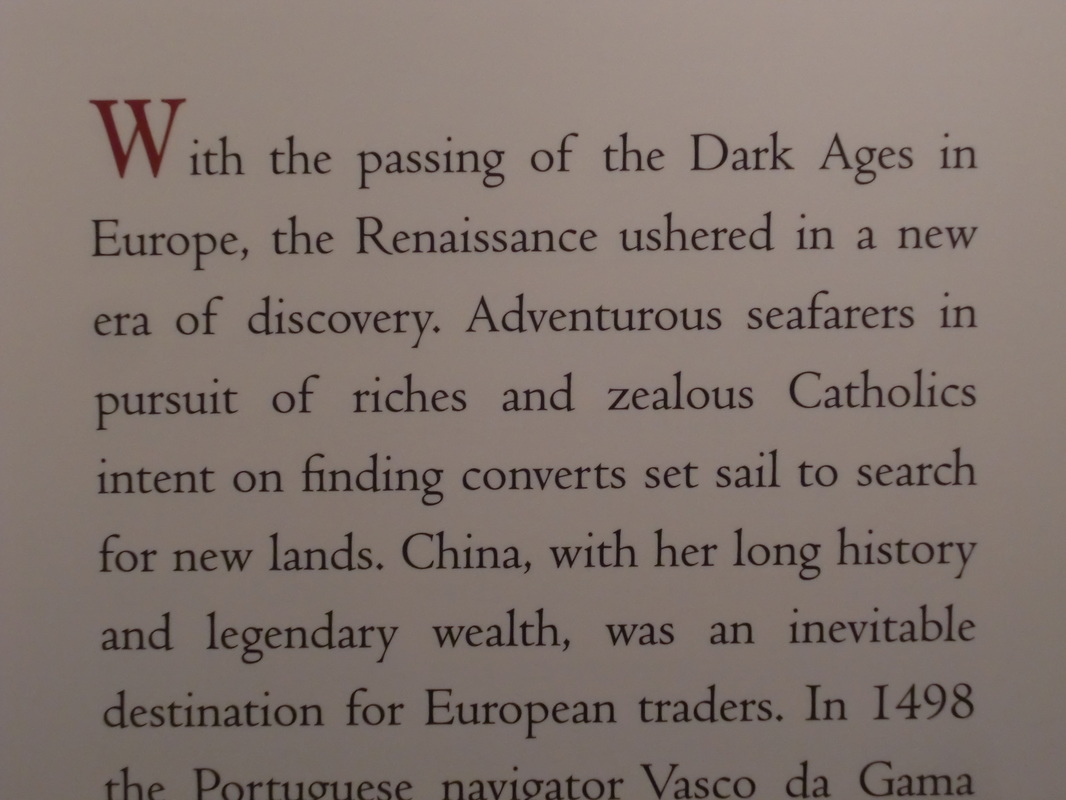
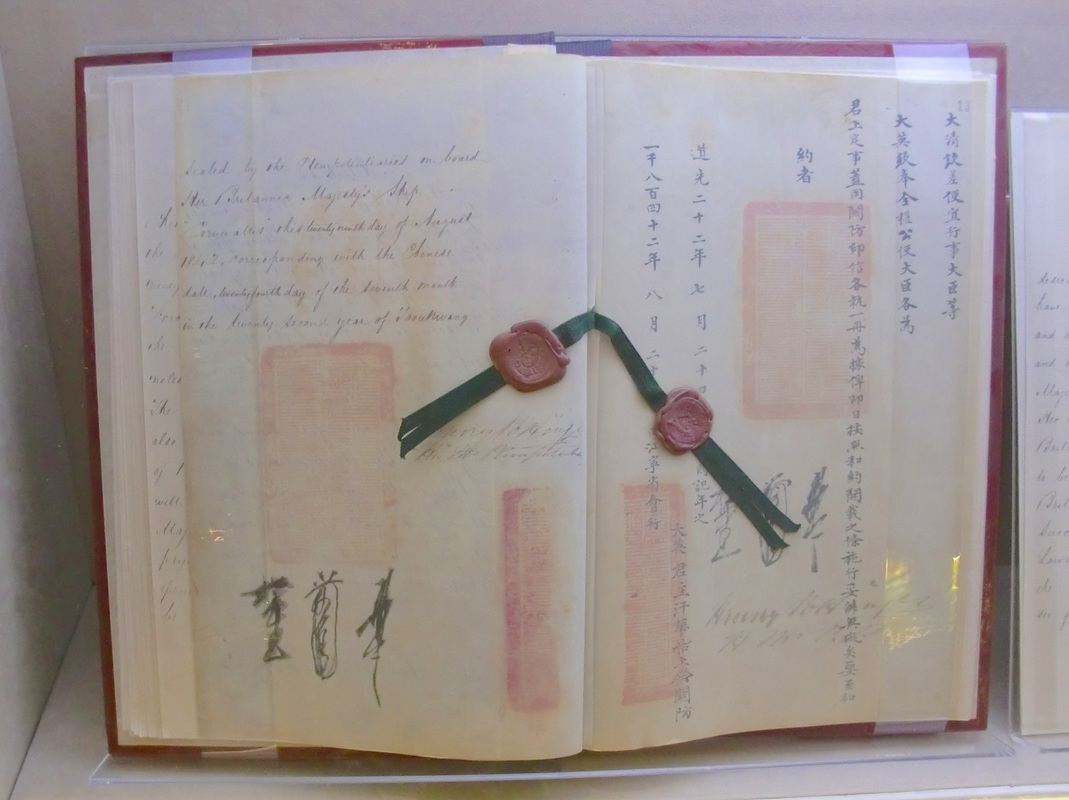






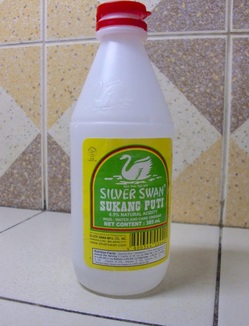
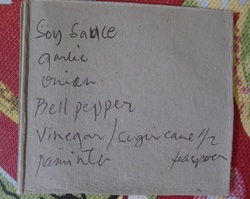



 RSS Feed
RSS Feed